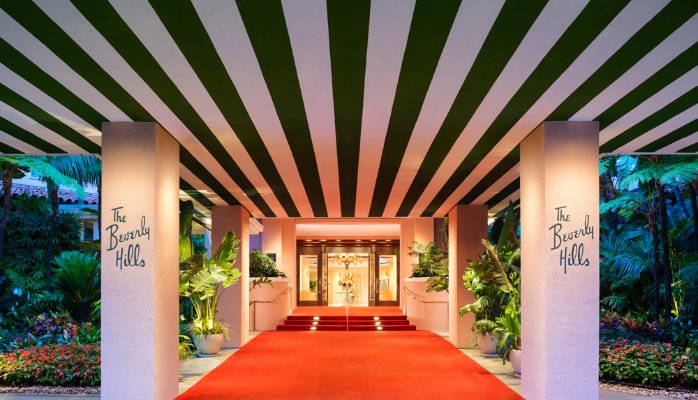
Daniel Poulin, Accor’s NCA LGBTQ+ Pillar lead shares his thoughts on how to effect change in Diversity and Inclusion.
Most people would agree that hospitality is behind other industries when it comes to diversity and inclusion.(D&I) Read More


Daniel Poulin, Accor’s NCA LGBTQ+ Pillar lead shares his thoughts on how to effect change in Diversity and Inclusion.
Most people would agree that hospitality is behind other industries when it comes to diversity and inclusion.(D&I) Read More

Is this the unspoken message delivered by many companies with products or services to offer?
I ask because although these companies employ both introverts and extroverts, the sales training that they deliver is invariably designed for the strengths of one personality type only; extrovert. Read More

Would Marilyn Monroe or Elizabeth Taylor have tolerated customer service shaped only by a checklist? No. Neither do today’s guests of The Beverly Hills Hotel, a favorite of those two actresses. While leading the 1,000 employees at The Beverly Hills Hotel and Hotel Bel-Air, I’ve seen how a customer’s experience can change based on something as small as a smile. At such moments, smooth operations and efficient processes are no substitute for an engaged, motivated employee with the instinct to do the right thing.
Yet luxury hospitality and retail businesses, like many other companies, can struggle to motivate employees. This is often a particular challenge with hourly-wage workers. Few organizations master it. As customers, we have all experienced an overworked and undervalued employee dismiss us with a shrug.
At our hotels, we keep our team motivated and our morale high by focusing on four important factors:
Financial Security
One of the most important ways that managers can help these employees be their best is to start by making them feel safe. Employees can only deliver great service if they have peace of mind. They can’t give their best if they are worried about their incomes or job security. Creating this sense of safety is really about speaking to two parts of each employee: his heart and his head.
Forgiveness
Fair pay is the basis for creating an organization where employees feel secure, but of course, it’s not enough. You also have to manage each employee’s emotions – that’s the heart. One of the most powerful ways to do this as a manager is to forgive errors. No matter how high your standards, perfection is beyond human reach. True forgiveness must be felt, not just stated.
When a person in my organization makes a mistake, I always try to ask: Are they repeating a mistake or making it for the first time? Can we forgive and teach? Sometimes the cerebral policy has to bend to the heart – because the employee made a mistake trying to do the right thing. Perhaps the employee took initiative to solve a customer problem for which we don’t have a policy. Looked at that way, maybe the mistake wasn’t a mistake after all.
It’s just as important to practice collective forgiveness. A hotel in San Francisco where I worked previously lost a 5-star travel rating after an inspector gave us a poor grade for front-of hotel experience. We had to connect head and heart to rally the team to win the rating back– even as customer volume was booming and we always felt short-staffed.
For two years, we nurtured excellence, meeting with employees one-on-one to analyze service. A secret shopper evaluated the team every six to eight weeks. At shift meetings, we shared the results, praising successes and noting mistakes. Individuals who scored well earned gift certificates or salary boosts. Soon, staffers were congratulating each other for 100% test scores. We shared positive reinforcement openly, but gave negative feedback privately, in combination with coaching.
Respect
When I arrived at The Beverly Hills Hotel, the employee entrance and locker rooms were, in the words of one colleague, “horrific” — quite run down and dirty. When you’re asking people to come to work in an ultra-luxury environment, this is a stark way to start the day. So we revamped the employee entrance to resemble the hotel’s iconic front-of-house arrival area for the guests — down to the green-and- white-striped canopy, palm plants, and red carpet. Today when employees come to work, they walk the red carpet, with music playing in the background. They have a sense of arrival and strong team morale.
Decisions like these lead employees to articulate not only that your company is a good place to work, but also why it is a good place to work.
Communication
To make employees feel safe, respected, and when necessary, forgiven, leaders have to make themselves available. At the Beverly Hills we have an open-door policy. Any employee can come see me with a question or suggestion. According to employee survey data, that policy helped overall employee engagement rise by 12% between 2010 and 2014. And at lunchtime, I frequently eat in the employee cafeteria, not the guest dining room, and I sit with different people in order to hear a range of feedback. This also gives me the opportunity to put our company’s good growth news front and center for our team, which reassures everyone in the organization – from the back office to the lobby – that their incomes are secure. It’s a positive, self-reinforcing loop.
To read the complete article by Edward A. Mady, Click here

Social media can be very powerful. A well positioned customer review can make or break a business. It can also elicit feelings of relating to the writer’s experience.
This week my friend Mark A. McKenney, a media consultant, posted the link to an article highlighting a woman’s birthday spa experience. It was published in Luxury Daily a leading trade publication.
Here is an excerpt:
“I am a mum of two young children and I am also client services director for an agency specializing in beauty, luxury and healthcare brands. So the time I spend in a day spa is at an absolute premium, carefully chosen based on trusted recommendations.
My expectations are high, but spas are everything that luxury should represent: immersion in a sensorial and physical environment that is a total escape for mind, body and soul.
However, my recent birthday visit to one of London’s hottest five-star day spas was distinctly lukewarm. Yes, there was beautiful interior design and excellent products. But all the little things that add up to make this an exceptional day out were absolutely wrong.
When luxury brand experiences rely 100 percent on attention to detail to elevate things to the extraordinary, this spa was not worth the five-star price tag.
Suffice it to say I did not leave as a brand ambassador. Things went awry from the moment I arrived and was greeted with the wrong customer’s booking details.
Then there was the couple next to me incessantly swiping smartphones in a no-mobile phone environment, the staff sounding like a training brochure recitation, and I was asked for payment as I was leaving even though the bill had already been settled.
It could have all been so different.
Pressing issues
Let us start with the personnel. Throughout my stay, hospitality staff and therapists seemed to lack the empowerment necessary to deliver a great, personalized luxury brand experience.
My companion explicitly mentioned it was my birthday upon arrival, but it was never once acknowledged. A glass of bubbly or a gift of nicely wrapped samples has a minimal cost outlay, but could have paid huge dividends in terms of my brand loyalty and advocacy.
Staff members that are allowed to flex treatments and service rather than follow a set script are the difference between a competent and excellent customer experience.
There are thousands of beautifully designed spas and beauty products globally. Delivering an exquisite, personalized experience over and above a beautiful setting with some nice smells will be the only way to survive.”
By not revealing the name of the spa, Sara Jones, graciously gifted our industry with a teachable moment. As a hospitality professional what did you learn and how will you put it to use in 2016?

Want to read more? Click Here>>>>http://linkd.in/1Nsss50